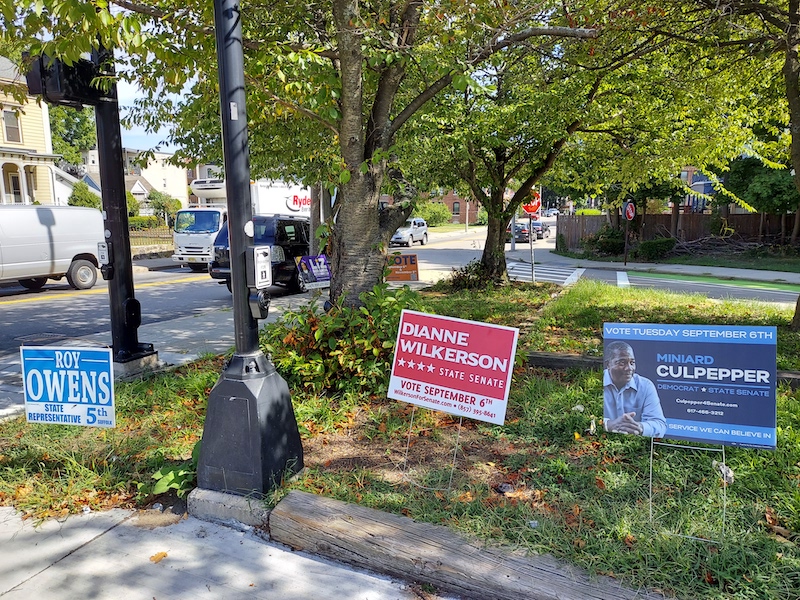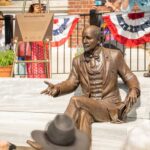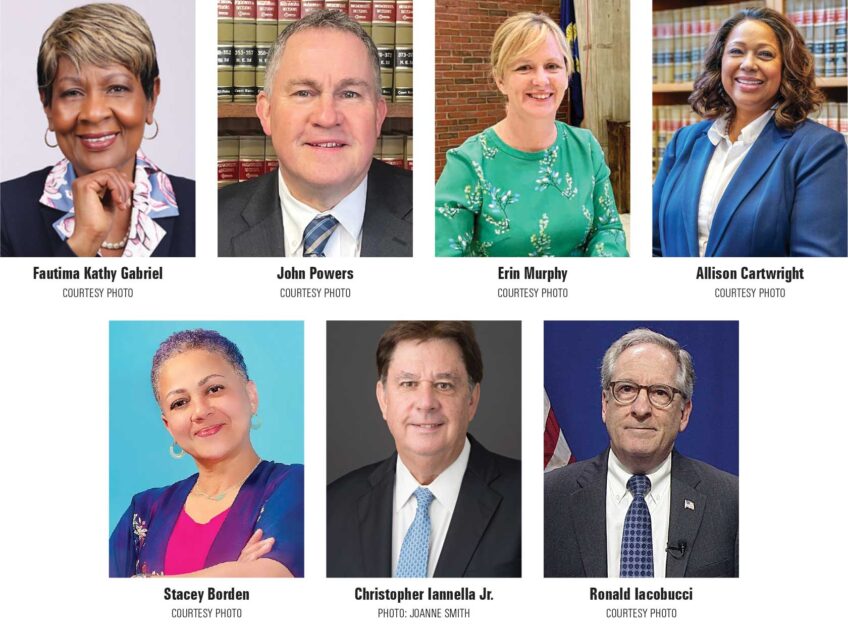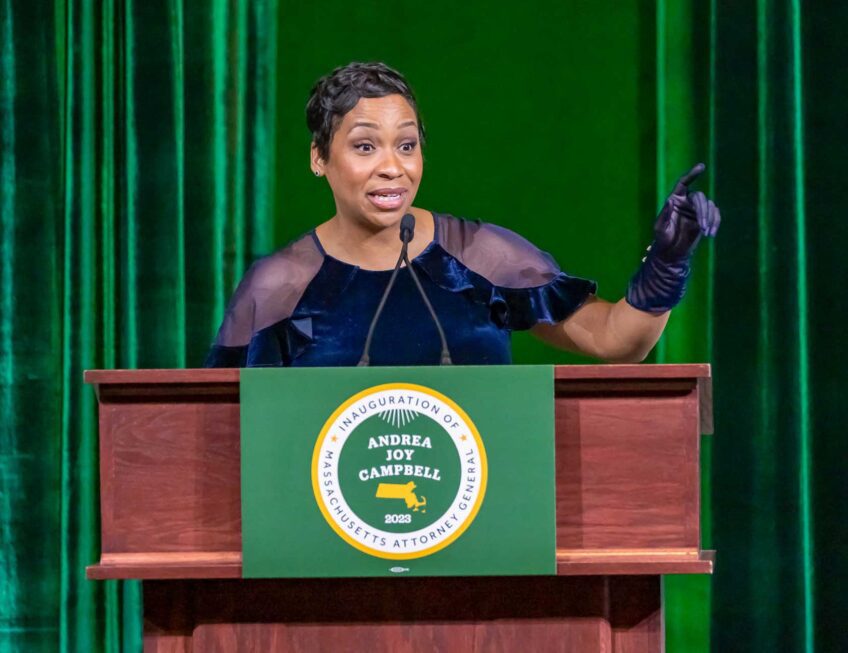Candidates v. the people: is it ok to put signs on public property?
Candidates use median strips, utility poles to gain visibility

With campaign season in full swing, candidates in the past few weeks were competing for endorsements, voters’ attention, voters’ votes … and real estate.
Not for homes or vacant land, but for high-visibility space for campaign signs: voters’ front lawns, fences at busy intersections and, increasingly, median strips on public roads, where signs can get the attention of passing motorists. While placing signs on private property is permitted, public property is off-limits in Boston, notes Boston Elections Commissioner Eneida Tavares.
“It’s a city ordinance,” she told the Banner. “You cannot affix or write notices on utility poles.”
Median strips, public fences, public buildings and all public property are off limits. Yet that doesn’t stop some campaigns from working the city’s streets into their voter outreach strategies. Median strips along Blue Hill Avenue, Warren Street, Columbus Avenue and Morton Street — a state highway, no less — have all been host to signs from scofflaw campaigns in recent weeks.
It’s not as if candidates don’t know the law.
“Ahead of every election, we do send a notice to every candidate,” Tavares notes.
Candidates are told their signs cannot adorn public property and advised that illegally placed signs can earn their campaign fines of $20 per offense. Between August of last year and this August, Boston residents lodged 89 complaints with the city’s 311 hotline regarding improperly placed signs, a spokeswoman for the city told the Banner.

Remember to vote! A candidate’s signs on the Blue Hill Avenue median strip in Mattapan Square. BANNER PHOTO
How much of a disincentive is a $20 fine to campaigns that are taking in tens of thousands of dollars in an election year? Perhaps not enough. In a 20-minute spin through Roxbury and Dorchester, a Banner reporter noted signs for 2nd Suffolk District candidates Miniard Culpepper, Liz Miranda and Dianne Wilkerson as well as signs for Sheriff Steve Tompkins and perennial candidate Roy Owens — What’s he running for? — on median strips and public green space, as well as a reminder from The Black Economic Council of Massachusetts to vote on Sept. 6.
The latter — a nonpartisan, civic-minded call to action — mirrors the city’s own effort, in which the Election Department places sandwich board signs at high-visibility intersections on public property — legally, in this case — to help boost voter awareness. BECMA’s signs might not have been needed on Blue Hill Avenue in Mattapan, had Wilkerson’s campaign volunteers not completely covered one of the city’s sandwich boards there with her red and white campaign signs.
Remember to vote! Dianne Wilkerson’s signs on the Blue Hill Avenue median strip in Mattapan Square.
“If you’re already breaking the law by putting signs on public property while campaigning to be a public servant, what kind of public servant will you be?” said Kristen Halbert, who has worked and volunteered for several Boston candidates over the last five election cycles. “Public ways should be kept free of campaign signs. It’s illegal.”
It is in Boston. But across Massachusetts, the laws vary, according to election lawyer Gerry McDonough, who served as an observer during the contentious 2000 presidential squeaker between George W. Bush and Al Gore as well as the equally contentious recount of the 2019 Julia Mejia vs. Alejandra St. Guillen at-large City Council race.
“Each community has its own rules,” McDonough notes.
Take, for instance, Boston. Every campaign operative seems to take it as axiomatic that signs can be placed in front of polling places the night before an election, so long as they’re taken down within 24 hours.
“You’ve got to take it down 24 hours after the election,” says Clifton Brathwaite, who has dressed polls, as the practice is called, run field operations and engaged in all manner of campaigning for numerous candidates over the last 30 years. “It’s always been like this.”
Halbert, too, cites this unwritten rule. She’s dressed polls for the campaigns of U.S. Rep. Ayanna Pressley, Mayor Michelle Wu and her brother, David Halbert, who ran for an at-large seat on the City Council.
“You just have to come out and dispose of them after,” she said.
But ask Elections Commissioner Tavares about the practice, and she cites a Massachusetts law banning poll dressing.

Haris Hardaway’s campaign has placed signs on the Morton Street median at Forest Hills Avenue at Franklin Park. BANNER PHOTO
“No candidate should be posting signs within 150 feet of a polling location,” she said.
What about the unwritten rule?
“I would not encourage any candidate to post signs on any of the areas that are prohibited,” Tavares reiterated.
While that law is strictly enforced in many Massachusetts towns where polling locations are school buildings at the end of a long driveway or a broad parking lot, in Boston, 150 feet is the equivalent of a half-mile in the ’burbs. Try placing your sign 150 feet from the entrance of the Higginson-Lewis School on Walnut Avenue in Roxbury, where voters from four precincts cast their ballots, and it’ll be around the corner from the polling location.
McDonough, who has been working on campaigns on and off since his brother won the 11th Suffolk seat centered in Jamaica Plain in 1984, says Boston has always looked the other way.
“They have historically allowed candidates to dress the polls,” he said.
In a busy election year such as this one, placing signs at polling locations reminds voters who may have come to vote only in the gubernatorial race of the candidates running for down-ballot positions.
“Signs are an indication of a strong campaign,” he said.
But what about the signs on the median strips?
Halbert says that’s different. When a campaign places signs in a homeowner’s front yard, she reasons, it’s an indication that at least someone at the residence supports a candidate. When it’s on public property, however, it tells a different story.
“You think, where are their people?” Halbert says. “Where are their votes? Because a median strip does not have a vote.”







